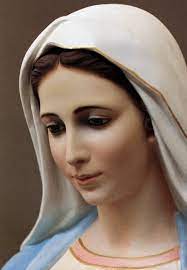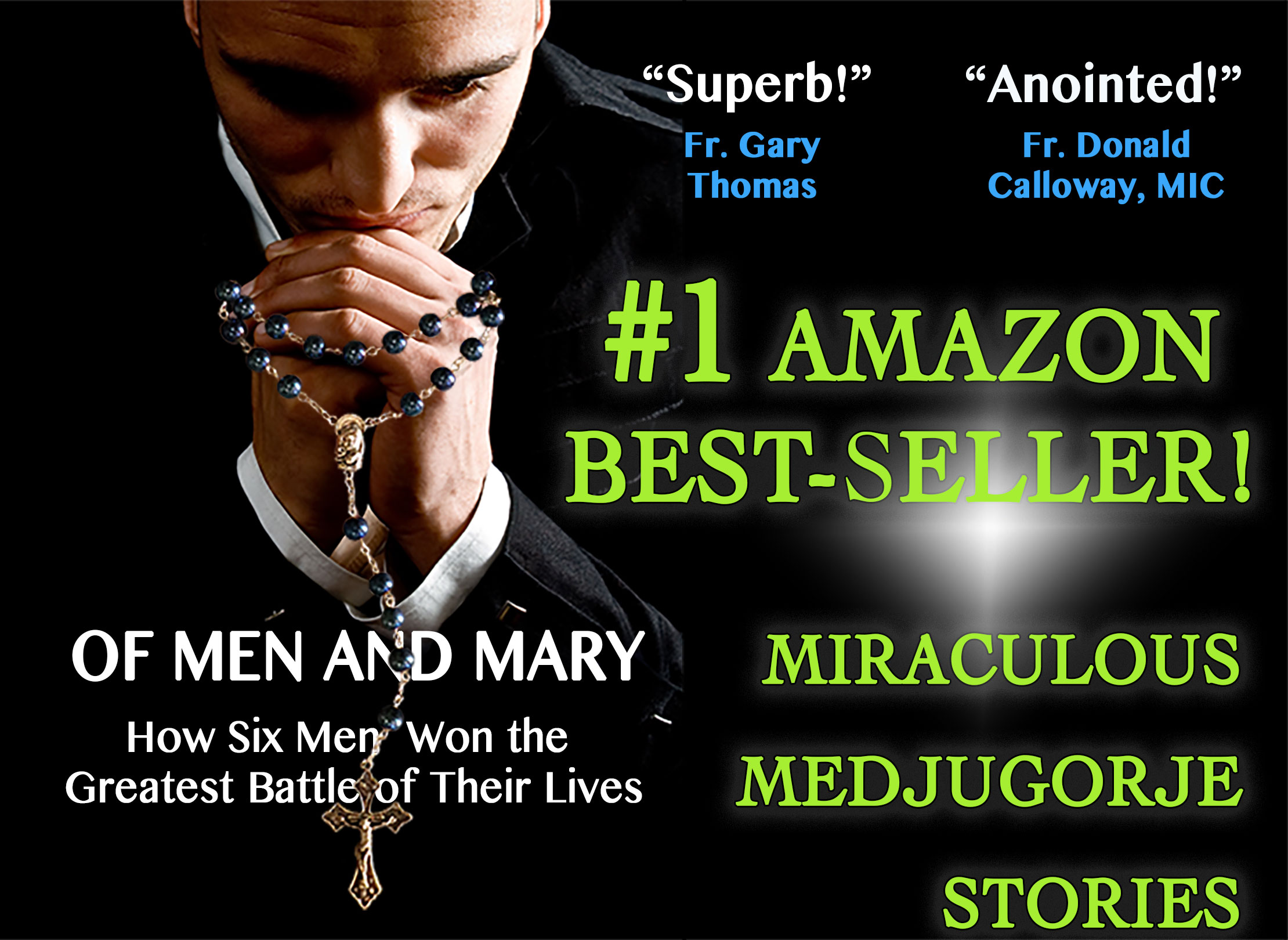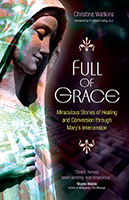Pope Francis
has done it again—he’s thrown out his personal opinion on a plane, causing a vast ripple effect. This time he shared his personal opinions on Medjugorje. His off-the-cuff statements unfortunately contain many untruths about Medjugorje and Marian apparitions in general, and contrast sharply with the beliefs of St. Pope John Paul II, Fr. Gabriel Amorth, the chief exorcist of Rome for many years, and St. Mother Teresa of Calcutta, among tens of thousands of others who have personally benefitted from Our Lady of Medjugorje. To compare personal opinions:
St. Pope John Paul II
met with the visionaries personally and closely followed the occurrences in Medjugorje during his lifetime. He was a vocal supporter of and believer in the apparitions there and once said, “Medjugorje, Medjugorje, it’s the spiritual heart of the world,” and, “If I weren’t pope, I would be in Medjugorje already.”
Fr. Gabriel Amorth, the chief exorcist of Rome,
who battled evil head on with the help of Mary of Medjugorje for thirty years and performed over 70,000 exorcisms, said “Medjugorje is a fortress against Satan.” Until his recent passing in 2016, he was the most prominent exorcist in the Church and spoke on national TV about Our Lady of Medjugorje. Satan’s biggest success, he said, has been constructing “a world culture without God, and the Madonna of Medjugorje has come specifically to bring back the world to God.”
St. Mother Teresa of Calcutta
believed in Medjugorje, prayed to Our Lady of Medjugorje, and once said, “I asked Our Lady of Medjugorje to come to my first home for the dying in Calcutta, and she did!”
Cardinal Christoph Schonborn,
the primary author of the Catechism of the Catholic Church, said that 90% of all new vocations in his diocese come in some way through Medjugorje.
All this is in stark contract to Pope Frances’ opinion, which he expressed on Saturday, May 13, while traveling home from the Catholic shrine at Fatima, Portugal, where he commemorated the anniversary of the visions of the Madonna to three shepherd children 100 years ago. Unlike St. Pope John Paul II, Pope Frances has not met the visionaries in person, and judging from his comments, he is not familiar with the manifold fruits of Medjugorje, nor of an approved apparition in his own home town, Buenos Aires, Argentina, in which Mary is doing exactly what the pope says Mary does not do. The following is an excerpt of his exact words, as transcribed from the audio recording on his flight. The corrections and comments, bracketed in red, are my own:
Regarding the first apparitions, when [the “visionaries”] were young: the report [the Vatican report headed by Cardinal Ruini and ordered by Pope Benedict XVI] more or less says that we need to continue to investigate. On the alleged current apparitions, the reports has its doubts. I personally am more “naughty” [Not a holy or well-discerned introduction]: I prefer Our Lady as mother, our mother, and not Our Lady as head of the telegraph office who sends a message every day at a certain hour … this is not the mother of Jesus. [But this is almost exactly what Our Lady has been doing in the Pope’s home town of Buenos Aires, Argentina, in her apparitions there approved by the local bishop. A total of 1,816 approved messages have been given by Our Lady of the Rosary of San Nicolas, to the visionary, Gladys Quiroga de Motta, from 1983-1990, and these apparitions and messages, just like in Medjugorje, continue to this day.] And these alleged apparitions do not have much value. [If one considers the following having little value: 610 vocations and 445 miraculous healings–and these are only the reported ones–not to mention the thousands of conversions and more daily Confessions than anywhere else on earth.] And I say this as my own personal opinion. But who thinks that Our Lady says: “Come and tomorrow, at this hour, I will give a message to that visionary”; no. [But Our Lady also gave a specific time and place where she would appear to the children in Fatima and give them messages.] [In the Ruini-report] a distinction is made between the two apparitions. And third, the true heart of the Ruini-report: the spiritual aspect, the pastoral aspect, people who go there and convert, people who encounter God, who change their lives … There is no magic wand for this, and one cannot deny this spiritual-pastoral aspect. [This is true and contradicts what he said earlier in this interview about the alleged apparitions not having much value.]
Now, in order to look at these things with all of this information, with the responses that the theologians sent to me, this bishop [delegate] was appointed [Cardinal Henryk Hoser]— he is very good because he has experience — to see how the pastoral part is going. And ultimately, something will be said.
The following is the conclusion of the Ruini report, which has just been published by the Vatican Insider.
Thirteen votes in favor of recognizing the supernatural nature of the first seven appearances in Medjugorje, one vote against and one “suspensive” ballot, which will give a final answer later. A majority of suspensive votes and many doubts instead, concerning the apparition phenomenon from the end of 1981 to today. These are the results of the work done by the commission on Medjugorje established in 2010 by Benedict XVI and chaired by Cardinal Camillo Ruini.
Pope Francis mentioned this report in the press conference on the return flight from Fatima when he revealed the distinction between the first apparitions and the later ones, saying, “A commission of good theologians, bishops, cardinals. Good, good, good. The Ruini report is very, very good. It is well known that the signal emerged from the Pontiff’s words is positive about the spiritual fruits and the conversions (”people who go there and convert, people who meet God, who change life”), but is negative with regard to the current apparitions “I prefer Our Lady Mother, and not the head of the telegraphic office, who sends a message every day.”
A commission wanted by Ratzinger
From 17 March 2010 to 17 January 2014, a commission chaired by Ruini was set up at the request of Pope Benedict XVI. In addition to the former chairman of the CEI, Cardinals Jozef Tomko, Vinko Puljić, Josip Bozanić, Julián Herranz and Angelo Amato took part. The psychologist Tony Anatrella, the theologians Pierangelo Sequeri, Franjo Topić, Mihály Szentmártoni and Nela Gašpar, the Mariologist Salvatore Perrella, the anthropologist Achim Schütz, the canonist David Jaeger, the speaker of the causes of the saints Zdzisław Józef Kijas, the psychologist Mijo Nikić and the official of the Doctrine of the Faith Krzysztof Nykiel. Their task was to “collect and examine all the material” about Medjugorje and to present “a detailed report” followed by a vote on the “supernatural nature or not” of the apparitions as well as the most appropriate “pastoral solutions.” The committee met 17 times and screened all documents filed in the Vatican, the parish of Medjugorje and the archives of the secret services of the former Yugoslavia. The commission heard all the seers and witnesses involved, and in April 2012, they carried out an inspection in the village of Herzegovina.
Positive Findings on First Appearances
The commission noted a very clear difference between the beginning of the phenomenon and its following development, and therefore decided to issue two distinct votes on the two different phases: the first seven presumed appearances between June 24 and July 3, 1981, and all that happened later. Members and experts came out with 13 votes in favor of recognizing the supernatural nature of the first visions. A member voted against and an expert expressed a suspensive vote. The committee argues that the seven young seers were psychically normal and were caught by surprise by the apparition, and that nothing of what they had seen was influenced by either the Franciscans of the parish or any other subjects. They showed resistance in telling what happened despite the police arrested them and death threating them. The commission also rejected the hypothesis of a demonic origin of the apparitions.
The doubts about the development of the phenomenon
With regard to the second phase of the apparitions, the commission took note of the heavy interference caused by the conflict between the bishop and the Franciscans of the parish, as well as the fact that the apparitions, pre-announced and programmed individually for each seer continued with repetitive messages. These visions continued despite the youngsters had said they would end, however that actually has never happened [the youngsters meant in the future]. There is then the issue of the “secrets” of the somewhat apocalyptic flavor that the seers claim to have been revealed from the apparition. On this second stage, the committee voted in two steps. Firstly, taking into account the spiritual fruits of Medjugorje but leaving aside the behaviors of the seers. On this point, 3 members and 3 experts say there are positive outcomes, 4 members and 3 experts say they are mixed, with a majority of positive, effects and the remaining 3 experts claim there are mixed positive and negative effects. If, in addition to the spiritual fruits, the behaviors of the seers is also taken into account, eight members and four experts believe that an opinion cannot be expressed, while two other members have voted against the supernatural nature of the phenomenon.
The Pastoral Solution
Having noted that Medjugorje’s seers have never been adequately followed on the spiritual side, along the fact that for a long time they have no longer been a group, the commission has endorsed the end of the ban on pilgrimages organized in Medjugorje. In addition, 13 members and experts out of the 14 present voted in favor of the constitution of “an authority dependent on the Holy See” in Medjugorje as well as the transformation of the parish into a pontifical sanctuary. A decision based on pastoral reasons – the care of millions of pilgrims, avoiding the formation of “parallel churches”, clarity on economic issues – which would not imply the recognition of the supernatural nature of the apparitions.
The doubts of the Doctrine of the Faith
Francis mentioned them on the airplane. The Congregation for the Doctrine of Faith led by Cardinal Gerhard Ludwig Müller expressed doubts about the phenomenon and about the Ruini report, considered an authoritative contribution to be compared with other opinions and reports. In 2016 a “Feria IV”, the monthly meeting of Dicastry members, was summoned to discuss the Medjugorje case and the Ruini report. Each of the cardinals and bishops who members of the Feria IV received the text of the commission but also other material in the hands of the Congregation for the Doctrine of the Faith. During the meeting, members were asked to give their opinions. However, Pope Francis, unwilling to have the Ruini report, which he esteems, to be put up for “auction”, decided that the opinions of the Feria IV members had to be sent directly to him. And that’s exactly what happened.
Francis’ decision
After examining the Ruini report and the opinions of the members of the Congregation for the Doctrine of the Faith, the Pope decided to entrust to the Polish Archbishop Henryk Hoser a “special mission of the Holy See” to “acquire more in-depth knowledge of the pastoral situation “In Medjugorje, and “above all, the needs of the faithful who come to pilgrimage” to “suggest any pastoral initiatives for the future.” By summer 2017 the Polish Archbishop will deliver the results of his work with which the Pope will make a decision.




 A new Medjugorje book! OF MEN AND MARY: How Six Men Won the Greatest Battle of Their Lives. Endorsed by Fr. Donald Calloway and Fr. Gary Thomas.
A new Medjugorje book! OF MEN AND MARY: How Six Men Won the Greatest Battle of Their Lives. Endorsed by Fr. Donald Calloway and Fr. Gary Thomas. The Medjugorje book, Full of Grace: Miraculous Stories of Healing and Conversion through Mary's Intercession. Endorsed by Wayne Weible, with a foreword by Fr. Robert Faricy.
The Medjugorje book, Full of Grace: Miraculous Stories of Healing and Conversion through Mary's Intercession. Endorsed by Wayne Weible, with a foreword by Fr. Robert Faricy.